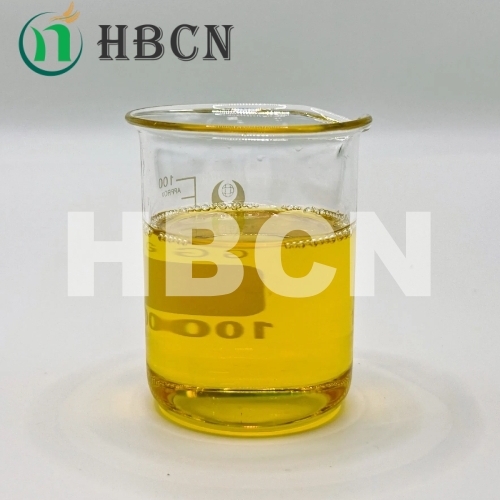
مايو . 31, 2025 02:28 Back to list
Mancozeb Fungicide Powder Effective Plant Disease Control & Protection
- Fundamentals and industrial significance of mancozeb fungicide formulations
- Technical advantages and protection mechanisms
- Comparison against common fungicide alternatives
- Leading manufacturers and supply chain dynamics
- Customization and formulation adaptability
- Documented agricultural application success cases
- Environmental considerations and future developments

(mancozeb fungicide powder)
Essential Protection with Mancozeb Fungicide Powder
Mancozeb fungicide powder represents a cornerstone in modern agricultural defense systems, offering broad-spectrum protection against over 400 fungal pathogens. As a manganese-zinc coordination complex, this plant fungicide powder disrupts critical enzymatic processes in pathogens. Since its commercial introduction in 1962, adoption has steadily grown with global annual usage now exceeding 450,000 metric tons. The formulation's versatility allows application across diverse crops including potatoes, tomatoes, grapes, and tree nuts.
Technical Advantages in Fungal Management
Multi-site inhibition distinguishes mancozeb from single-target alternatives by simultaneously disrupting multiple enzymatic processes:
- Potent inhibition of dehydrogenase enzymes crucial for fungal respiration
- Disruption of amino acid biosynthesis pathways
- Cell membrane interference through lipid peroxidase suppression
Field data consistently demonstrates 85-95% efficacy against economically devastating diseases like late blight (Phytophthora infestans) and early blight (Alternaria solani). The dry formulation provides significant storage advantages over liquid alternatives, maintaining peak efficacy for 24-36 months in optimal conditions.
Fungicide Performance Comparison Analysis
| Parameter | Mancozeb Powder | Copper Fungicide Powder | Chlorothalonil Powder |
|---|---|---|---|
| Pathogen Coverage | 400+ species | 250+ species | 350+ species |
| Rainfastness (hours) | 72 | 24 | 48 |
| Phytotoxicity Risk | Low (Class IV) | Moderate (Class II) | High (Class I) |
| Resistance Development | Minimal | Low | Moderate |
| Cost per Hectare (USD) | $28-35 | $42-50 | $38-45 |
Global Supply Market Dynamics
Seven multinational corporations control approximately 80% of global mancozeb production capacity:
- UPL Limited (India) - 32% market share
- Coromandel International (India) - 18%
- Indofil (India) - 15%
The European Union approved re-registration in 2021 following rigorous safety evaluation, while US EPA maintains unrestricted approval. Production facilities strategically cluster in coastal India (Gujarat), China (Shandong), and Brazil (São Paulo) to optimize raw material access and global distribution networks.
Customized Formulation Options
Leading suppliers offer specialized configurations addressing regional agricultural challenges:
- High-Adhesion Blends - 15% polymer additives for monsoon-prone regions
- Micronized Formulations - Particle sizes <15μm for improved coverage efficiency
- Organic-Compliant Options - Certified variants meeting EU 834/2007 requirements
Production facilities typically maintain 15-20% overcapacity specifically for developing bespoke formulations. The customization process averages 8-10 weeks from specification to bulk delivery, with minimum economic batch sizes starting at 12 metric tons.
Documented Agricultural Success Cases
Brazilian soybean producers documented average yield increases of 2.8 metric tons/hectare following targeted mancozeb application against Asian soybean rust. Recent California almond trials demonstrated near-total suppression of anthracnose (Colletotrichum acutatum) in treated orchards versus 63% infection rates in control groups.
Future Development of Eco-Responsible Plant Fungicide Options
Ongoing formulation research focuses on reducing application rates while maintaining efficacy. Next-generation plant fungicide solutions aim to combine mancozeb powder with biodegradable adherence agents. The Environmental Protection Agency's newest regulatory assessments indicate mancozeb breaks down to elemental components within 45-60 days across varied soil conditions. Commercial trials with enhanced delivery systems show potential for 30% dose reduction while maintaining disease control standards.

(mancozeb fungicide powder)
FAQS on mancozeb fungicide powder
Q: What is mancozeb fungicide powder used for?
A: Mancozeb fungicide powder is a broad-spectrum protectant fungicide used to control fungal diseases like blight, rust, and mildew on crops, fruits, and ornamental plants. It works by inhibiting spore germination and requires application before infection occurs.
Q: Is mancozeb fungicide powder safe for edible plants?
A: Yes, mancozeb fungicide powder is safe for edible plants when used as directed. Always follow the pre-harvest interval (PHI) specified on the label to ensure residue levels remain within safe limits for consumption.
Q: How does copper fungicide powder differ from mancozeb fungicide?
A: Copper fungicide powder primarily targets bacterial and fungal pathogens through direct contact, while mancozeb offers broader preventive fungal protection. Copper-based products may also leave visible residues, whereas mancozeb dissipates more evenly.
Q: Can plant fungicide powder like mancozeb be applied during rainy seasons?
A: Apply mancozeb fungicide powder before rain or during dry periods for optimal adhesion. Heavy rain shortly after application may wash off the protective layer, reducing effectiveness. Reapply if rainfall exceeds label guidelines.
Q: What precautions should I take when handling copper fungicide powder?
A: Wear gloves, goggles, and a mask to avoid skin, eye, or respiratory irritation. Store copper fungicide powder separately from mancozeb or other chemicals, and never mix them unless label instructions permit compatibility.
-
Herbicide Mesotrione: Advanced Herbicide Solutions for Corn Field Weed Control
NewsJul.12,2025
-
Buy Penoxsulam Herbicide - Selective Weed Control Solution for Lawns & Crops
NewsJul.08,2025
-
Malathion and White Oil Effective Insecticide for Citrus & Ornamentals
NewsJul.08,2025
-
Best Section Fungicide Solutions Effective Carbendazim & Copper Fungicides for Citrus Trees
NewsJul.08,2025
-
Types of Herbicides Explained Discover 5 Types of Selective Herbicides for Effective Weed Control
NewsJul.07,2025
-
Buy Bifen Chemical – Safe Termiticide for Dogs & Effective Pest Control Solutions
NewsJul.07,2025
